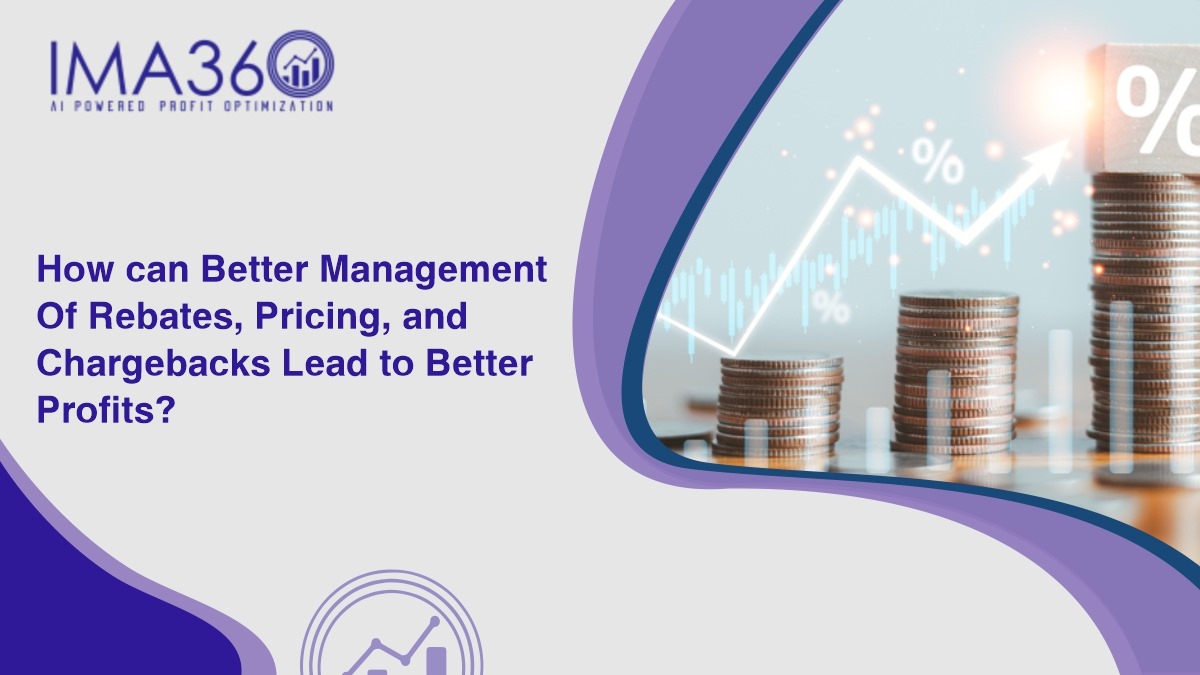Introduction
Welcome to the world of Customer Rebate, where profitability meets customer satisfaction in a harmonious dance. In this blog, we’ll explore the ins and outs of customer rebate programs, uncovering the power they hold for businesses and buyers alike. Get ready to delve into the exciting realm of incentives, loyalty, and accounting as we unravel the secrets behind successful rebate programs. Let’s embark on this journey together and discover how customer rebates can revolutionize your business strategy and propel you towards greater success.
The Power of Customer Rebate Programs
Customer rebate refers to a financial incentive provided to customers by businesses as a way to encourage purchases, foster loyalty, and drive sales. It is a strategic marketing tool that offers customers a partial refund or discount on a product or service after they have made a qualifying purchase. The rebate can be in the form of cashback, gift cards, store credits, or other forms of value. By offering rebates, businesses aim to incentivize customers to choose their products or services over competitors, increase customer satisfaction, and build long-term relationships.
Customer rebate programs come in various types and structures. Some common examples include loyalty rebates, where customers earn rewards or discounts based on their continued patronage or accumulated purchases. Cashback rebates provide customers with a percentage of their purchase price refunded to them. Manufacturer or retailer rebates are often used to stimulate demand for specific products or attract new customers. These programs not only benefit customers by providing financial savings but also allow businesses to gather valuable customer data, track purchasing patterns, and tailor future marketing strategies.
Managing customer rebate programs involves careful planning, implementation, and accounting. Businesses need to define rebate terms and eligibility criteria, set up efficient tracking and redemption processes, and ensure compliance with rebate policies. Accurate accounting for rebate transactions is crucial for financial reporting, revenue recognition, and maintaining transparency. Additionally, businesses must calculate rebate expenses, adjust margins, and assess the profitability of rebate programs to ensure they contribute positively to the bottom line. Effective customer rebate programs can enhance customer satisfaction, drive sales, and create a competitive advantage in the market.
Understanding Customer Rebates
Customer rebates are financial incentives provided by businesses to customers as a way to encourage purchases, foster loyalty, and drive sales. Rebates can take various forms, such as loyalty rebates, cashback incentives, or other types of discounts. Loyalty rebates reward customers for their continued patronage or accumulated purchases, strengthening the relationship between customers and businesses. Cashback incentives, on the other hand, offer customers a percentage of their purchase price refunded to them after making a qualifying purchase. These rebate programs aim to attract customers, boost sales, and enhance customer satisfaction.
Offering rebate programs to customers brings several benefits for businesses. Firstly, it can attract new customers by providing a competitive edge and making products or services more appealing. Rebate programs can also foster customer loyalty and encourage repeat purchases, as customers are incentivized to continue buying from the business to earn future rebates or rewards. Additionally, customer rebates can generate positive word-of-mouth, as satisfied customers are more likely to recommend the business to others. Overall, customer rebate programs can drive sales, increase customer satisfaction, and contribute to long-term business success.
The Role of Rebate Programs in Marketing and Sales
Rebate programs play a vital role in marketing and sales by enhancing customer engagement and loyalty, increasing purchase motivation, and driving repeat purchases. These programs incentivize customers to choose a particular business by offering financial rewards, discounts, or other incentives. By providing such benefits, rebate programs not only attract new customers but also encourage existing customers to continue buying from the business, thereby fostering loyalty. This loyalty, in turn, can lead to increased customer retention and advocacy, positively impacting the business’s overall sales and revenue. Rebate programs act as powerful tools in the marketing arsenal, effectively driving customer engagement, boosting sales motivation, and contributing to the business’s overall success.
Implementing a Customer Rebate Program
A. Setting Up a Rebate Program:
To successfully implement a customer rebate program, businesses need to develop a comprehensive rebate management system. This involves establishing the necessary infrastructure, processes, and guidelines to effectively manage the program. It includes designing a clear structure for the rebate program, setting up rebate agreement terms, and determining eligibility criteria for customers to qualify for the rebates. By establishing a well-defined rebate program, businesses can ensure transparency, consistency, and fairness in rewarding their customers.
Choosing the right rebate management software is another crucial aspect of setting up a rebate program. There are various software options available that can streamline rebate management processes, automate tracking and processing, and provide real-time insights. It is essential to evaluate different software solutions based on factors such as scalability, integration capabilities, and reporting functionalities to select the most suitable option for the business’s specific needs. Implementing robust rebate management software can significantly enhance efficiency, accuracy, and overall effectiveness in managing customer rebate programs.
B. Managing Customer Rebate Programs Effectively:
Once a customer rebate program is in place, it is vital for businesses to manage it effectively to ensure customer satisfaction and program success. This involves tracking and processing rebates efficiently to minimize delays and errors. By implementing streamlined systems and employing dedicated personnel or teams to handle rebate processing, businesses can ensure timely and accurate rebate disbursement. Additionally, businesses need to focus on the fulfillment of rebates and provide seamless redemption processes for customers to claim their rewards. By establishing clear instructions, easy-to-follow redemption procedures, and reliable customer support, businesses can enhance the overall experience for customers participating in the rebate program.
Ensuring compliance with rebate policies and expiration dates is another critical aspect of managing customer rebate programs. Businesses must stay updated on rebate policies, regulations, and industry standards to avoid any legal or ethical issues. It is essential to clearly communicate expiration dates and any specific terms or conditions associated with the rebates to customers. By maintaining compliance and transparency, businesses can build trust and credibility with their customers, enhancing the success and reputation of the rebate program.
Accounting for Customer Rebates:
A. The Basics of Rebate Accounting:
Accurate rebate accounting is crucial for businesses’ financial reporting as it ensures transparency, compliance, and reliable data. Properly recording rebate transactions allows businesses to track rebate expenses, analyze the impact on revenue, and provide accurate financial statements. It also facilitates the recognition of revenue in the appropriate accounting period, aligning with revenue recognition principles and regulations. However, businesses should be aware of the nuances in rebate accounting, such as complex eligibility criteria, varying rebate terms, and potential challenges in tracking and validating rebate claims. By understanding these nuances, businesses can establish robust accounting practices and overcome potential hurdles that may arise in managing rebate programs.
B. Calculating and Adjusting Rebates:
To calculate different types of rebates, businesses can employ various methods. Quantity-based rebates may involve determining discounts or incentives based on the volume of purchases made by customers. Percentage-based rebates, on the other hand, calculate the rebate amount as a percentage of the purchase price. Integration of rebate calculations into customer accounts and accounts payable processes is crucial for accurate financial record-keeping. This integration ensures that rebate amounts are properly reflected in customer accounts and appropriately deducted from accounts payable. When considering rebate expenses, businesses should carefully assess their impact on margins and profitability. Adjusting margins to account for rebate expenses is essential for maintaining profitability while offering customer incentives. By evaluating factors such as rebate costs, sales volume, and target profitability, businesses can strike a balance between providing attractive rebates and ensuring sustainable financial performance.
Maximizing the Benefits of Customer Rebate Programs
A. Strategies for Effective Implementation:
To maximize the benefits of customer rebate management, businesses can leverage customer data and analytics. By analyzing customer preferences, purchase history, and behavior, businesses can create targeted and personalized rebate offers. This approach increases the likelihood of customers engaging with the rebate program and encourages them to make additional purchases. Additionally, businesses can explore opportunities for collaborating with suppliers to tap into supplier rebates and cooperative programs. This collaboration can unlock additional incentives, discounts, or rewards for customers, enhancing the overall value proposition of the rebate program. Furthermore, optimizing marketing and promotional activities is crucial. By strategically aligning rebate offers with marketing campaigns, businesses can create synergies that amplify the impact of rebate programs, attract new customers, and boost overall sales.
B. Enhancing Customer Experience and Transparency:
Streamlining rebate processing is key to improving the customer experience. By implementing efficient systems and processes, businesses can minimize the administrative burden on customers, simplify rebate submission and validation, and expedite the rebate fulfillment process. Providing clear instructions and reliable customer support is equally important. By offering detailed guidelines on how to qualify for rebates and promptly addressing customer inquiries or concerns, businesses can increase customer satisfaction and ensure a positive rebate experience. Additionally, businesses should prioritize transparency in rebate policies. This includes clearly communicating eligibility criteria, rebate terms and conditions, expiration dates, and any other relevant information. Transparent policies build trust and confidence among customers, reducing the likelihood of misunderstandings and disputes. By proactively addressing customer concerns and maintaining transparency, businesses can foster positive customer relationships and maximize the benefits of their rebate programs.
Conclusion
In conclusion, customer rebate programs hold significant importance for both businesses and customers. For businesses, these programs serve as powerful tools to drive sales, foster customer loyalty, and gain a competitive edge in the market. By offering attractive incentives and rewards, businesses can attract new customers, encourage repeat purchases, and enhance overall customer satisfaction. Proper management of rebate programs, including setting up a comprehensive rebate management system, employing effective accounting practices, and engaging customers through personalized offers, is essential to maximize the benefits these programs can offer.
Accurate rebate management and accounting enable businesses to track and analyze rebate expenses, recognize revenue appropriately, and ensure compliance with regulations. Moreover, leveraging customer data and analytics allows businesses to create targeted and personalized rebate offers, increasing their relevance and effectiveness. By streamlining rebate processing, providing clear instructions, and offering reliable customer support, businesses can enhance the overall customer experience and build trust with their customers.
It is clear that implementing customer rebate programs can have a significant impact on a business’s sales, profitability, and customer relationships. By embracing these programs and investing in their proper management, businesses can unlock new opportunities, drive revenue growth, and strengthen their position in the market. So, if you haven’t already, it’s time to consider implementing a customer rebate program and take advantage of the many benefits it can bring to your business.

Anuj Gupta has 25+ years of experience in software development, helping 20+ Fortune 500 companies optimize pricing, promotions, and rebates. He founded IMA360 to address the lack of industry-configured solutions, enabling faster market entry and higher profitability. Through tailored SaaS tools, he drives margin optimization and operational efficiency across sectors







